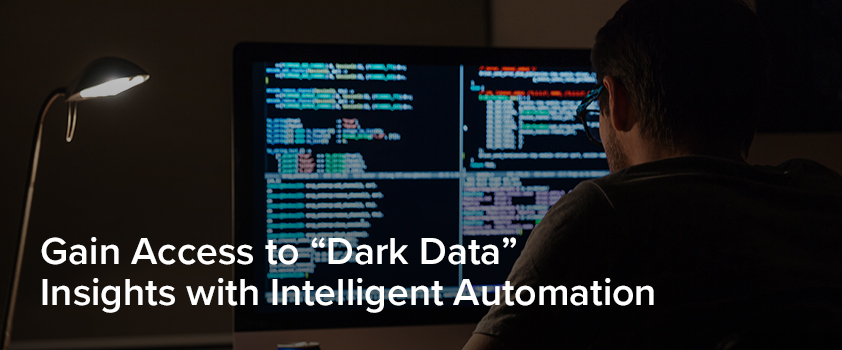Robotic process automation (RPA) is yesterday’s news. Today, cutting-edge organizations deploy intelligent automation as RPA’s worthy successor. Intelligent automation promises to bring about the organizational change that RPA merely hinted at, as it combines the creativity of humanity with the irrefutable logic, accuracy, and speed of artificial intelligence. Below, we’ll explore this human-machine synergy and explain the top four reasons organizations are investing in intelligent automation.
1. Ability to Move Beyond Rule-Based Tasks
RPA must follow pre-programmed rules that restrict its usefulness to “if X happens, perform Y” scenarios. For example, if a website visitor completes a “contact us” form, RPA software automatically follows up with a programmed set of communications. And though this level of robotic activity is better than none at all, today’s automation platforms are capable of far more. Intelligent automation blends machine learning capabilities with RPA to move beyond rule-based tasks to complete more sophisticated, impactful jobs. When a healthcare patient fills out their health insurance information, for instance, intelligent automation software automatically checks for insurance verification, provides a patient financial liability calculation, and automatically flags a front desk employee to provide patients with relevant information if they are eligible for financial assistance. Even in such a simple process, a number of efficiencies immediately jump out — namely, removing the need for manual information verification, improving backend finance and accounting functions, and enabling better patient support.

2. Increased Data Availability and Use
Intelligent automation offers another significant upgrade over RPA because of its ability to unlock data previously beyond the reach of both RPA and human employees. Within this “dark data” lies a virtual goldmine of information that provides a competitive edge in today’s digital economy. In fact, the average company analyzes just 20% of the customer data they collect. Though most companies understand the potential value of that remaining 80%, legacy systems often hamper effective data integration and analysis. Unfortunately, integrating the data held by disparate legacy systems is generally too complex for RPA and too labor-intensive for humans. What’s more, manual data reconciliation is repetitive and prone to human error, making it likely to negatively affect the employee experience. In contrast, intelligent automation holds the cognitive ability to rationalize various data sources and combines that with a computer’s accuracy and speed. As a result, it’s the key to permitting access to “dark data” and encouraging data-centric operations throughout an organization.
3. Workers Re-Assigned to Higher-Value Work
RPA began to evolve work by eliminating basic administrative functions from employees’ workloads. But intelligent automation continues and expands this shift by addressing the next level of tasks — those that are neither difficult nor easily defined by rule-based processes. Digital finance departments are the perfect proving ground for the impact of intelligent automation on these tasks because employees often complete highly-variable yet relatively straightforward functions. For example, Sutherland partnered with an automotive retailer to deploy an intelligent automation solution that allowed 60% of invoices to be processed without human touch. By automating this category of work, employees are freed to proactively and creatively drive their business forward.
4. Improved Internal and External Support
Intelligent automation also improves upon RPA’s ability to streamline internal stakeholder support and external customer service. Whereas RPA could efficiently copy information from customer web-forms or internal service portals, intelligent automation can answer low-level asks on its own and route more complicated tasks to human employees for remediation. The end result? Support agents are now freed from mundane work to focus on more difficult, higher-value tasks — or in other words, to handle the customers in need of the most help. This is true for customer service agents but also for employees in departments like finance and accounting and IT who must frequently respond to simple internal requests for information.
Though perhaps not as dramatic as Moore’s Law, automation technology is advancing swiftly each year. What’s cutting-edge one day is out-of-date the next, and as we move into 2020, it appears RPA is in the midst of this familiar shift. Therefore, organizations seeking a competitive advantage would be wise to familiarize themselves with intelligent automation software in order to begin its targeted deployment in key business units.
For more information, visit our Business Process Transformation page or get in touch today.




